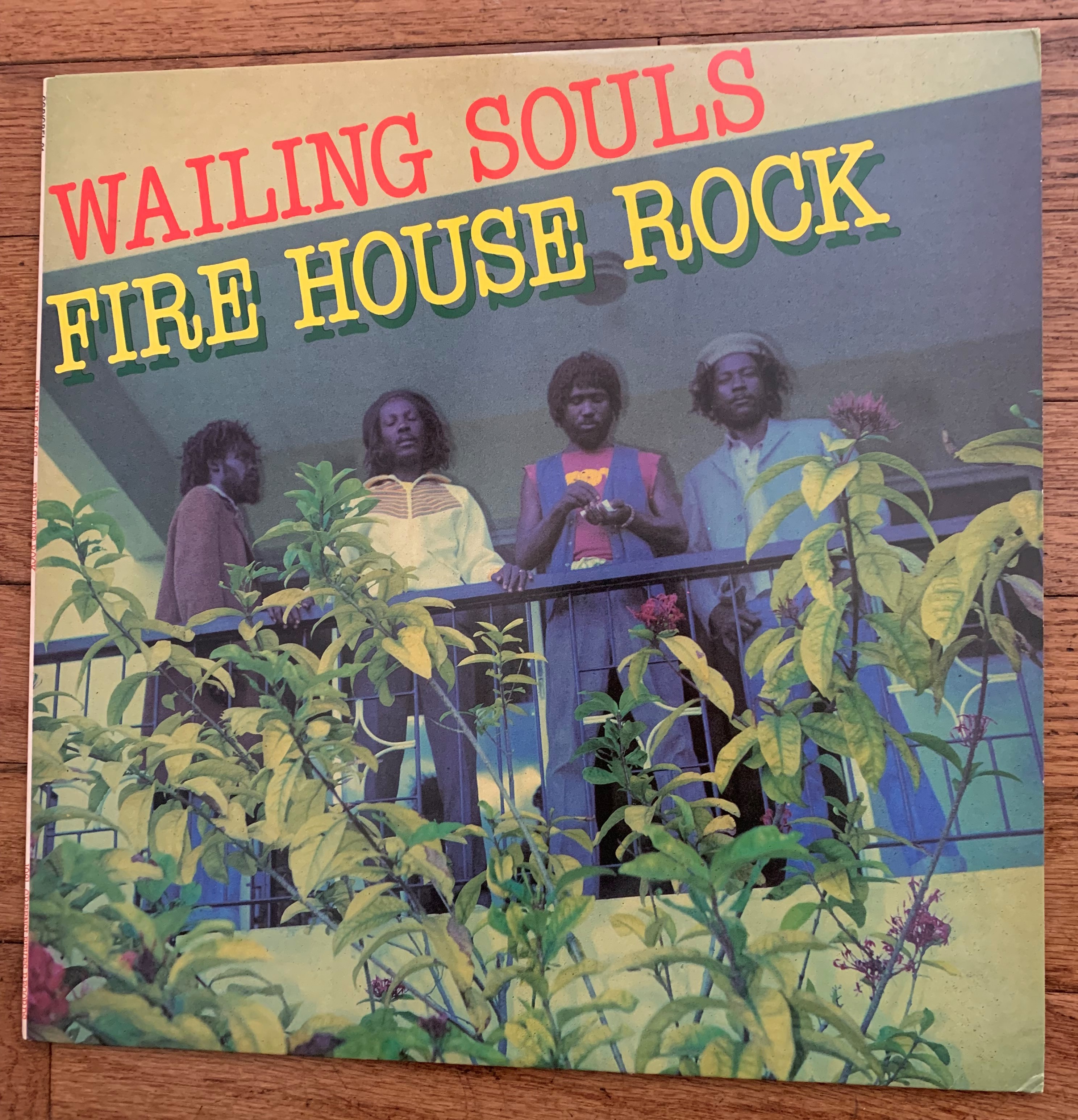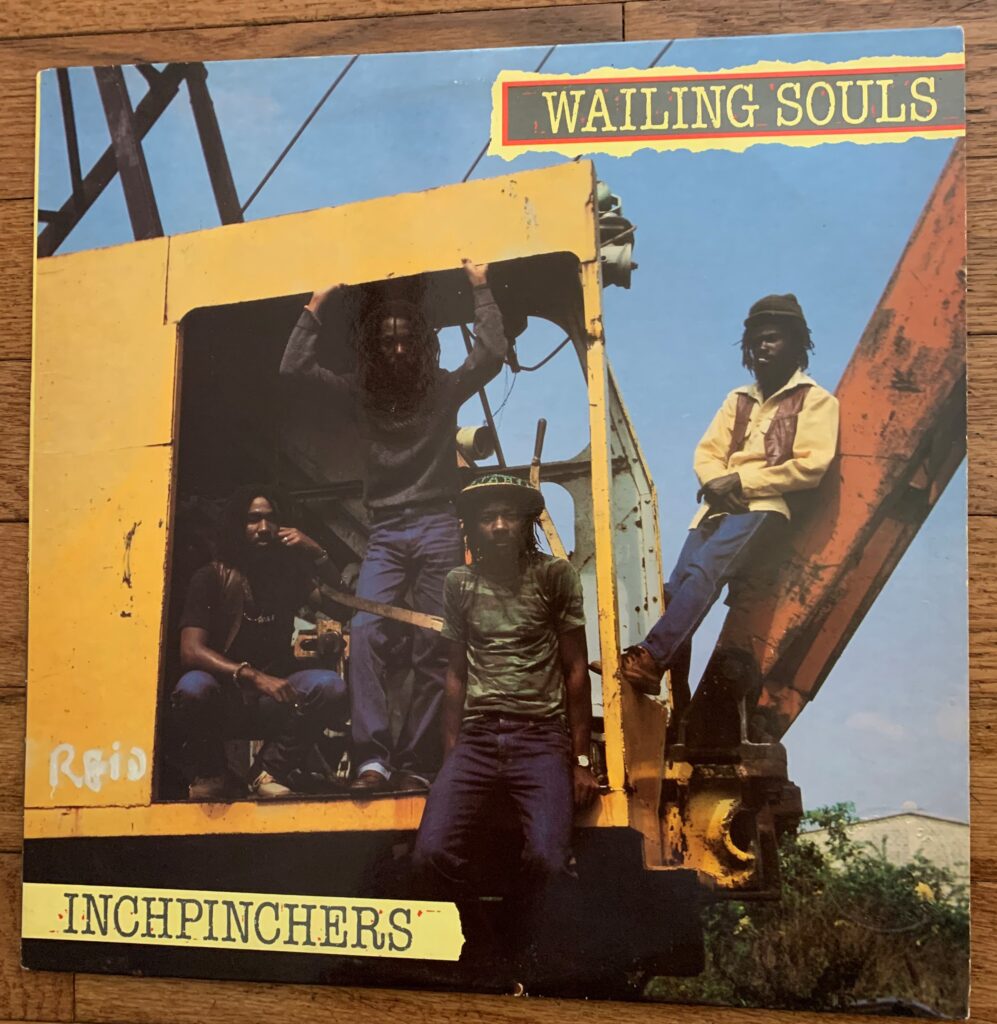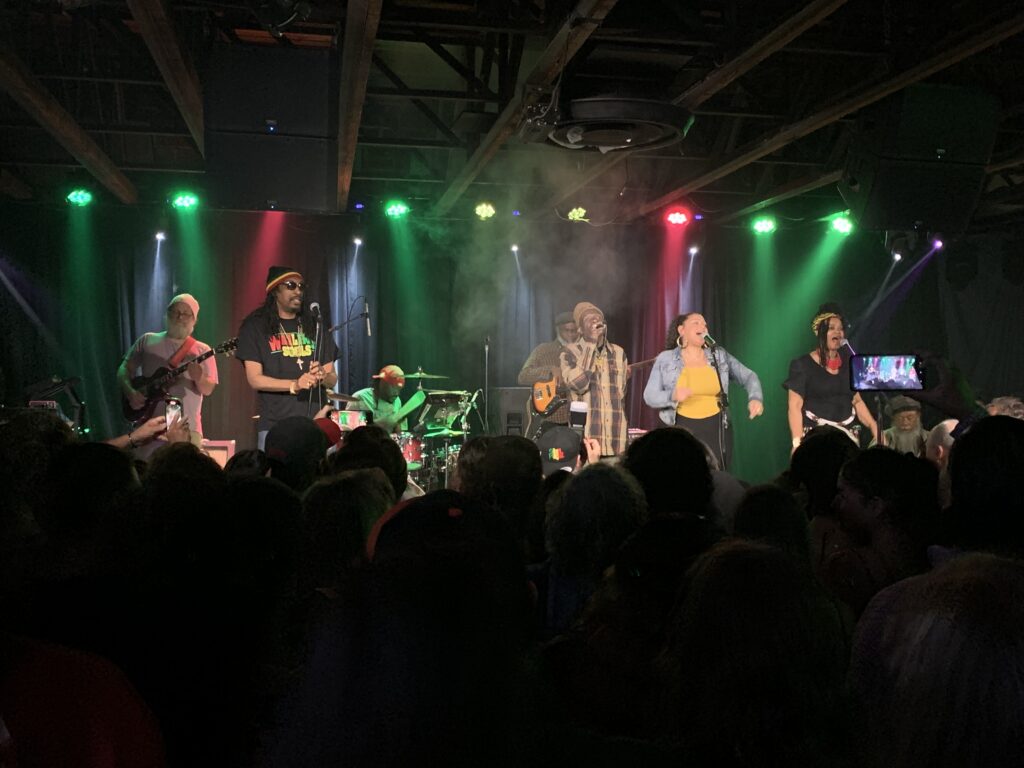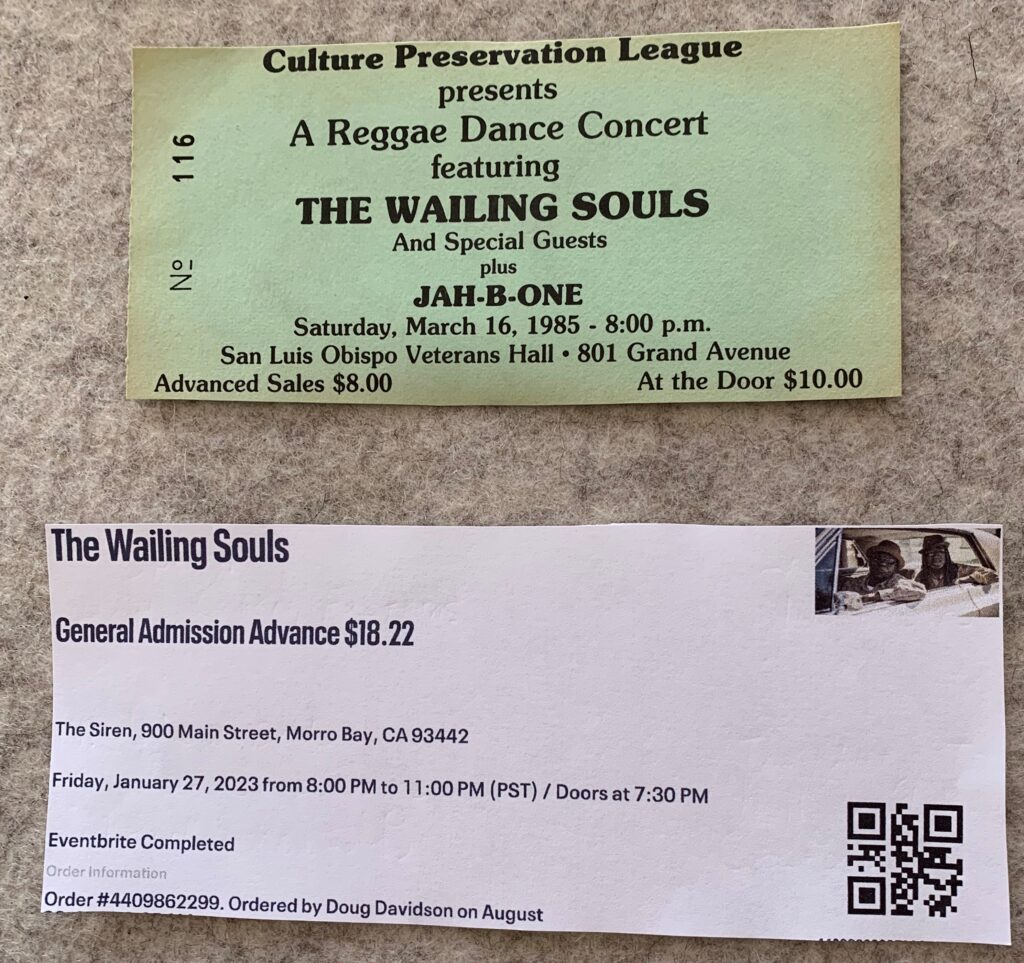I like reggae. It really hits the spot sometimes, especially outside on hot summer days. It does tend to sound the same, however, so I can’t listen to it all the time. But it’s repetitive by design. The staccato chords of the guitar (or piano) playing on the offbeat of the dominant rhythm section. It’s instantly recognizable. Hundreds of reggae songs use the same beat.
Reggae is a unique experience in concert. In addition to guitar, bass, and drums, horns are often part of the mix, along with background singers, and keyboards. The band is often 10 members strong. Long dreadlocks, shades, colorful clothing, and a spiritual vibe. It’s a visual and audio spectacle. The constant rhythm engulfs you into its bouncy trance. So different from a rock concert.
Reggae originated in Jamaica in the late 1960s, evolving out of ska and rocksteady. Bob Marley and the Wailers went through this musical transition and became the international symbols for reggae with the release of Catch a Fire and Burnin’ in 1973. On the heels of the The Harder They Come film in 1972, the Wailers became the most successful reggae band ever by embodying the traditional roots style. They became even more popular when Eric Clapton covered their “I Shot the Sheriff” in 1974. Bunny Wailer and Peter Tosh, both Wailers, went on to thriving solo careers. Jimmy Cliff, Burning Spear, Gregory Isaacs, Culture, Black Uhuru, Dennis Brown, The Mighty Diamonds, and Toots and the Maytals, are some of the other well-known artists from this heyday of reggae.
Their influence was immediate and has never waned. British punks discovered reggae (my two favorite punk covers: Bob Marley’s “Johnny Was” by Stiff Little Fingers and Junior Murvin’s “Police and Thieves” by The Clash.) UB40 and Steel Pulse brought the reggae tenets from Kingston to London. Latin America artists embraced reggae and modified it with hip-hop, as exemplified by reggaeton from Puerto Rico. Numerous white bands have delivered a reggae sound draped in ska and hard rock, such as Rebelution, Iration, The Expendables, and Slightly Stoopid.
If you have a chance to see any of the roots reggae groups in concert, go for it because we are losing the classic reggae generation. In fact, we’ve pretty much lost them. Bob Marley and Peter Tosh died way too young. Gregory Isaacs, Bunny Wailer, and Toots Hibbert left us more recently. Those that are still alive are well into their 70s. Jimmy Cliff just released a new album at 78 years old. Powered by Jah and ganja, reggae embodies Rastafarianism’s cultural and spiritual beliefs. It’s remarkable that a small island in the Caribbean can create such a lasting and influential musical genre.


The Wailing Souls are one of the few remaining. They formed in 1966 in Kingston as The Renegades, becoming Wailing Souls in 1968. The two founding, constant members Winston “Pipe” Matthews and Lloyd “Bread” McDonald apprenticed under reggae legend Joe Higgs, who trained Bob Marley. The early 80s was their peak with the albums Fire House Rock, Inchpinchers, Wailing, and On the Rocks. They’re known for their four-part harmonies which are wonderful to hear in person (as I did in March 1985).

It was a treat to see the Wailing Souls again, this time at a small nightclub in the central coast town of Morro Bay, CA. It was a rescheduled concert from September 2022 when their bus broke down on the way to California from a reggae fest at Red Rocks. (Ah, the ol’ bus breakdown, a touring certainty for all bands at some point.) Sure enough, they were a nine-member band: guitar, bass, drums, keys, three background singers, “Pipe” Matthews, and a MC to bring Jah into the house. The highlights were the four songs from their best-known album, Fire House Rock: the somber chants of “Kingdom Rise Kingdom Fall,” the smooth “Oh What a Feeling,” the sing-along vibe of “Act of Affection,” and the classic title song. It was a joyous night of Rasta love (and ganja, the smoke got so thick that even one of the singers suggested the crowd take a cannabis pause). Somewhat bittersweet, however, as I was expecting to see the two original members on stage, but the Wailing Souls were the Wailing Soul. The fire is almost out, but the spirit and music of roots reggae is indelible.

D² Rating ◼◼◼◼☐
Trivia: Who is credited with coining the term “reggae” music?
Answer: Toots Hibbert and the Maytals in the 1968 song, “Do the Reggay.”
Comments
10 responses to “The Wailing Souls in Concert: Roots Reggae Lives On”
I was lucky enough to see Bob Marley and the Wailers at the Santa Barbara County Bowl back in the day. One of my favorite concerts of all time. Also, on the day that Bob Marley died, I saw Jimmy Cliff at a small club in San Francisco. He sang No Woman No Cry as a tribute, and I was able to score a warm handshake from Jimmy as he meandered through the audience upon leaving the stage. Good reggae vibes!
Barcelona1, thanks for sharing! The Santa Barbara Bowl is my favorite venue and I’ve always regretted not making that Bob Marley show. It’s known as one of the greatest shows ever around these parts. That is a concert of a lifetime. A handshake from Jimmy Cliff, too! Good reggae vibes indeed.
I love the history! Thanks for that. Don’t let it end! JAH! ❤️🔥
Rastafari!
We listen to the Peter Tosh radio channel on Pandora. I press the like button when an “oldie” comes on so that I get more of the early music, because there are so many progenitors in this music space. I’m listening to Hopetown Lewis sing “Take It Easy” at the moment. Tosh and Marley of course, Gregory Isaac and Dennis Brown are some favorites. Toots and the Maytalls, Burning Spear and Black Uhuru and so many others. Jimmy Cliff’s “The Harder They Come” was a soundtrack of our lives pre-Pandora when the CD’s in the players only offered up what we were already listening to. I highly recommend the movie of the same name starring JC himself, if you haven’t seen it.
Bob N., thanks for sharing! I’ve never heard of Hopetown Lewis. I’ll have to check out that song. I forgot to list Black Uhuru. They were great the one time I saw them in S.B. I saw “The Harder They Come” in I.V. sometime in the late ’70s. Shoot, you may have been with me. Thanks again. Now I can picture you listening to reggae on Pandora.
DD, thanks for the post-I’d go see Reggae in person whenever I could, glad you got to see The Wailers. Besides the regular influence from Marley which was popular in the day, 6757 DP roomie John Karamitsos introduced me to a lot of other reggae. My whole family knows the lyrics to Marley, Tosh, Jimmy Cliff, etc. Redemption Song and others are now known by heart. Desmond Dekker is another early artist I like. Just listened to Dandy Livingstone singing “Rudy, a Message to You” which you’d recognize as The Specials covered it more popularly. Now Dennis Brown with Revolution Part One. Some people might say the music sounds a lot the same due to the rhythm and beat, but some artists do really stand out for their singular sound. Too many good artists to mention.
Thanks again, Bob! You said it, too many to name. And thanks for the shout out to John Karamitsos! Yes, Mr. Reggae, he introduced me to so many artists, including Desmond Dekker and Dennis Brown. I never did really search out those two artists. I’m going to now. I also need to hear that original of “Rudy, a Message to You.” If you’re still in contact with John, maybe you could forward him this link. Might be cool to let him know we’re still recognizing the impact he had on our musical appreciation.
Awesome article DSquared! I thank the punks for turning me on to reggae. Nice call out on SLF’s cover of “Johnny Was”, I don’t know what possessed a group of Belfast punks to put an 8+ minute reggae cover on their debut album, but man, it works 🙂
Love that old ticket stub – “Culture Preservation League presents” at the SLO Veterans Hall. Growing up in San Diego, it was the North Park Lions Club for us. If they only knew what was going on in their halls after hours!
I’ll have to give the Wailing Souls a listen, that’s a new one for me.
BrianS, thanks so much for the comments. I appreciate the recognition of the SLF cover and the old ticket stub. Check out the Firehouse Rock album for the best intro to the Wailing Souls.